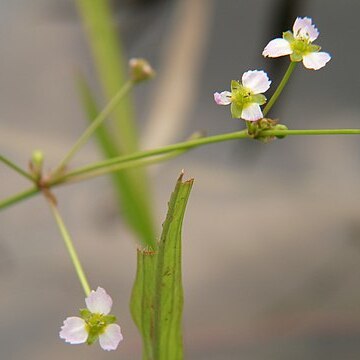A herb. It keeps growing from year to year. It grows up to 80 cm high. It develops tubes 1-3 cm across. The leaves have stalks 9-30 cm long. They are sword shaped and 6-45 cm long by 1-5 cm wide. The flowering groups are 35-65 cm long with 3-6 rings of 3-8 branches of flowers. They are white.

